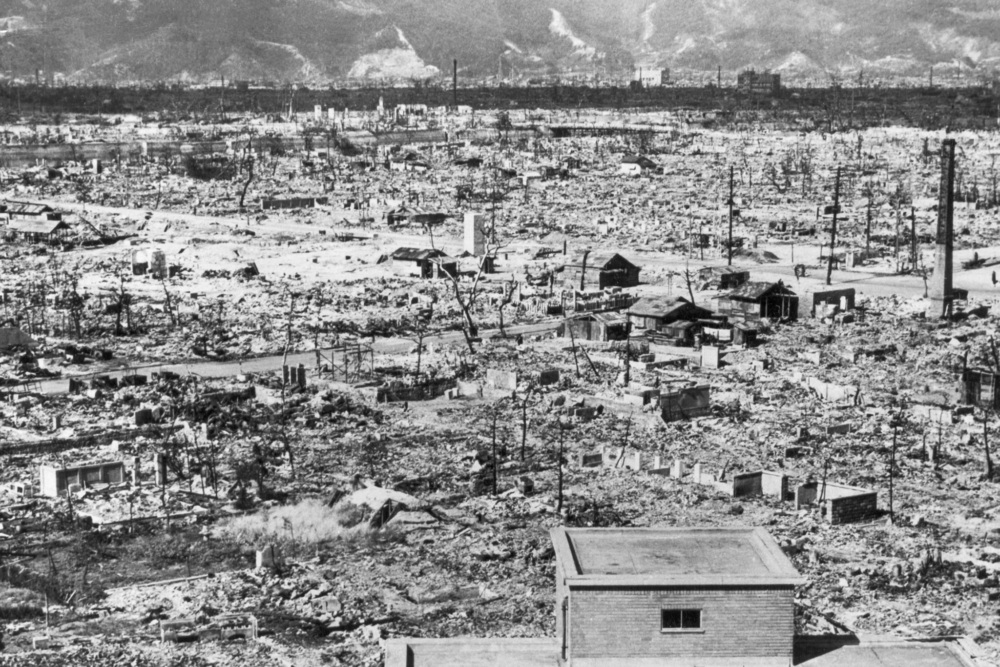
Patricia Jaworek
Senior Program Officer, Global Nuclear Policy Program
Atomic Pulse
About the image
The bombings of Hiroshima and Nagasaki in 1945 made clear the destructive force of the light, heat, blast, and radiation from a nuclear explosion. But what exactly would the effects of a nuclear explosion mean for the world today? There is no definitive answer to this question because much of the existing literature about the effects of a nuclear explosion is out of date or inconclusive.
NTI has created a new project, Understanding the Global Effects of Nuclear Conflict in the 21st Century, in response to the urgent need for a modern research agenda that clarifies the ramifications of a nuclear exchange. Through this project, NTI is convening scientists and policy experts who can build on existing analysis and discourse about nuclear effects in a way that accounts for the interconnectedness of societies, economies, and infrastructure in this era.
The research gap on nuclear effects has crucial implications. Policymakers and leaders around the world have an imperfect picture of what a nuclear blast means, so they are prone to underestimating the risks of nuclear use and projecting incomplete narratives about the effects of nuclear weapons through policy and rhetoric.
These misperceptions about the scale of global nuclear destruction are perpetuated when political leaders, cultural leaders, and journalists use the idea of a nuclear explosion to contextualize the severity of non-nuclear disasters. After Hurricane Katrina, a Category 5 tropical storm, hit Louisiana and Mississippi in 2005, then-Mississippi Governor Haley Barbour stated he “can only imagine that this is what Hiroshima looked like sixty years ago.” In 2012, when Category 3 Hurricane Sandy hit New York and New Jersey, The Washington Post reported that the storm generated “more than twice the energy of the Hiroshima atomic bomb.” In fact, as NASA explained, “during its life cycle a hurricane can expend as much energy as 10,000 nuclear bombs.”
In each case, nuclear comparisons were made in an attempt to capture the magnitude of destruction. But comparing a storm to the impact of the nuclear bombs detonated over Hiroshima and Nagasaki only trivializes the destruction of those cities and indicates how little leaders understand about the far-reaching effects of nuclear explosions. Even if a natural disaster is comparable to a nuclear bomb in terms of energy released, nuclear explosions remain qualitatively different for a host of reasons, including that their use carries the risk of escalating into a civilization-ending nuclear war.
Recent speculation about Russia’s potential use of “tactical” nuclear weapons in Ukraine—bombs whose lower yield is often used to justify their increased military utility—tends to be similarly misleading in that those weapons are neither “small” nor “more usable.”
Extreme heat and radiation are among the more immediate and understood elements of a nuclear blast, but a bomb’s impact would go well beyond incinerated bodies, houses, and trees. Experts predict that the use of nuclear weapons could lead to humanitarian crises on a local and regional level; disrupt the environment, weather patterns, and agricultural ecosystems; and trigger the collapse of critical infrastructure and the global economy.
Studies show that even a regional nuclear conflict—for example between India and Pakistan—would likely result in sudden and severe global cooling that would last for more than a decade. The decline in temperature and precipitation would disproportionately affect the most important grain-growing and exporting regions in North America and Eurasia and result in severe production shocks and a prolonged disruption of global food distribution and international trade.
In addition, critical infrastructure, such as energy systems and just-in-time global supply chains, are strikingly vulnerable due to the existence of hundreds of single points of failure, which, if disrupted by even a single nuclear bomb, could herald rapid and catastrophic ripple effects across the global economy. These would likely include GDP crashes, skyrocketing inflation, power grid failures, and the collapse of import-export trade.
Amid rising concerns about the possibility of Russian nuclear use in Ukraine and the “lethal escalation” it could trigger, it is more important than ever to quantify and reach definitive conclusions about the global and longer-term effects of nuclear explosions. While this work is underway, there are steps everyone can take to improve the public discourse on nuclear weapons: communicating nuclear effects in a less sensationalist way, considering the significant differences between nuclear and non-nuclear devastation before drawing comparisons, and expanding efforts to educate friends and peers about the true effects of nuclear weapons. Better communication and clear, modern research will increase awareness and catalyze action to reduce the risks of nuclear weapons use.
Sign up for our newsletter to get the latest on nuclear and biological threats.
Eugenia Zoloto is a Ukrainian artist who specializes in paper cutting, collages, and illustrations, in addition to working with oil paints and mixed mediums. She lives in Kyiv with her husband and two children and is participating in the 2023 #CranesForOurFuture campaign by contributing a beautiful floral sculpture featuring an origami crane.
If you want to learn more about Oppenheimer’s bomb and what we must do to protect the world today and for future generations, NTI’s online library is the perfect place to go.
"Visiting Hiroshima imparted to me a deep sense of responsibility as well as a renewed energy to work towards a world without nuclear weapons," writes Program Officer Ananya Agustin Malhotra.



